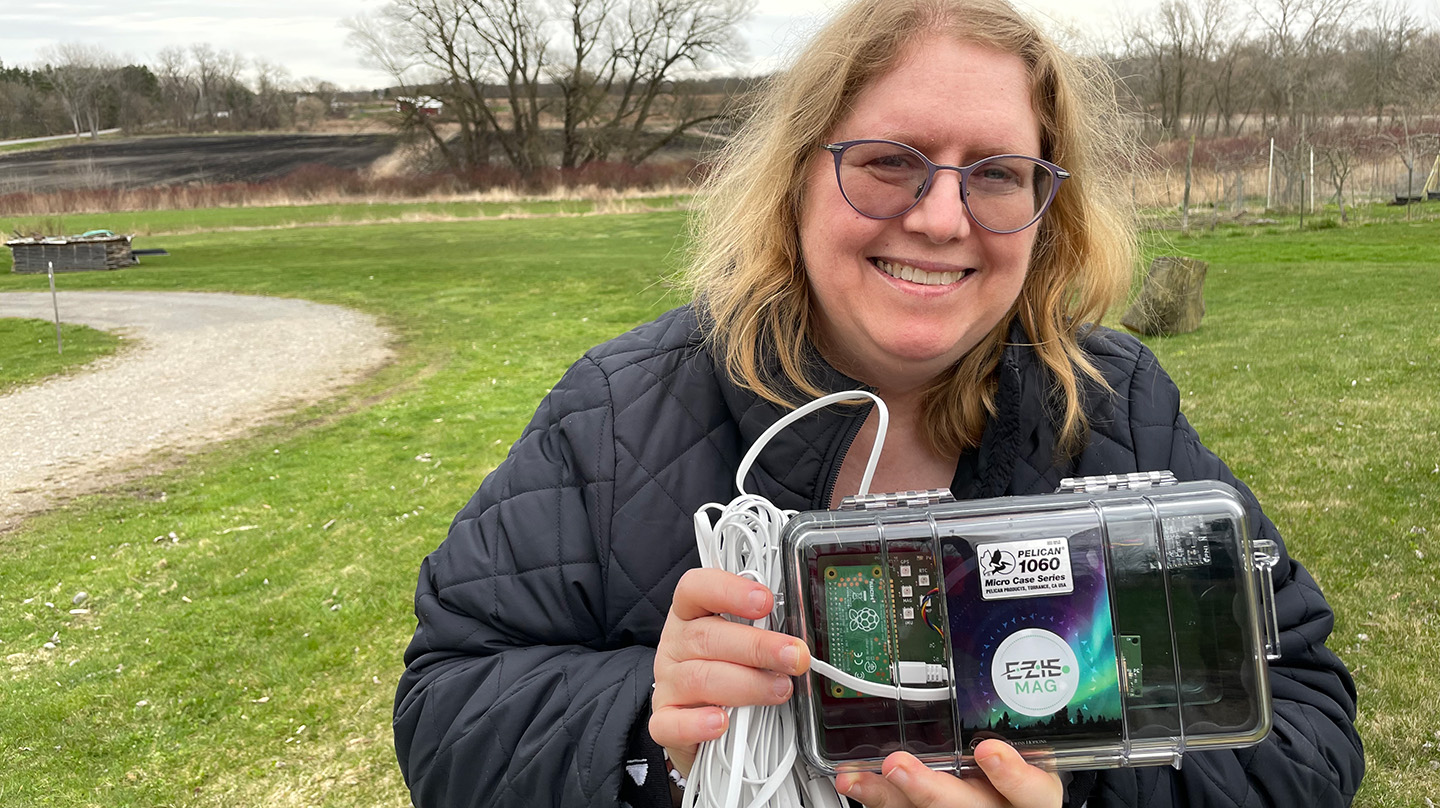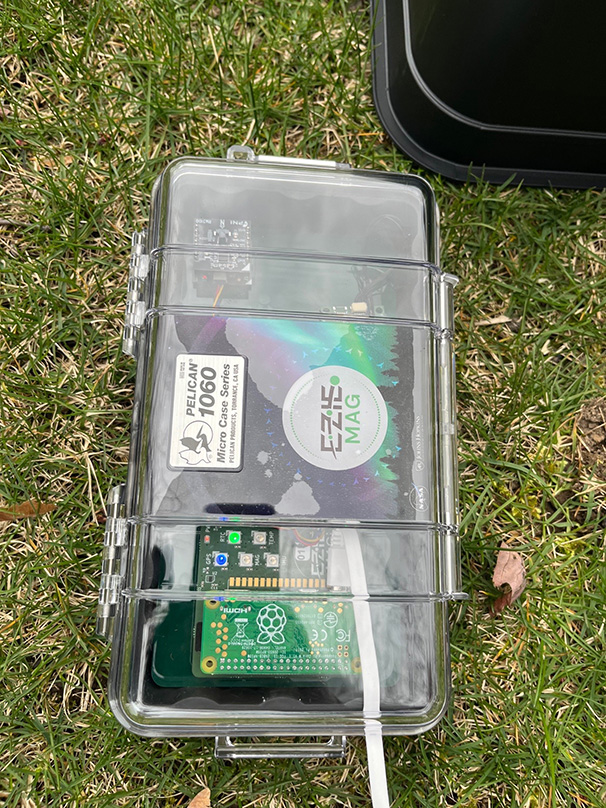News
Johns Hopkins APL Staffers Employ EZIE-Mag to Track Solar Eclipse
Staff members from the Johns Hopkins Applied Physics Laboratory (APL) in Laurel, Maryland, brought more than just eclipse glasses when traveling to view the total solar eclipse on April 8. They packed their own miniature magnetometers as well.
Later this year, the team behind NASA’s Electrojet Zeeman Imaging Explorer (EZIE) mission will build and freely distribute around 700 magnetometer kits, nicknamed EZIE-Mag, to students and teachers across the United States, focusing on Indigenous communities.
But the total solar eclipse — the first visible in the U.S. since 2017 — presented the EZIE team with a unique opportunity to test EZIE-Mag’s capabilities through a grassroots effort involving several Lab staff members.
More than 20 APLers who traveled to the eclipse’s path of totality brought EZIE-Mags to measure the magnetic field signature associated with electrical currents that scientists speculate were generated as the Moon glided between the Sun and Earth, and briefly darkened the sky.
“It’s awesome that at APL, we get to work with people from all walks of life willing to come together to support this project,” said Rafael Mesquita, a space physicist on the EZIE team who helped organize the initiative.
EZIE-Mag and the Mission
The EZIE mission, scheduled to launch this year, will measure the auroral electrojets, electrical currents that flow between Earth and space. Three CubeSats, satellites each the size of a small suitcase, will travel pole to pole to image these magnetic fingerprints, providing insights into Earth’s magnetosphere and space weather — phenomena fueled by the Sun — including auroras and geomagnetic storms.
“EZIE will not just solve decades-old mysteries about how these currents connect Earth to space, but provide students and citizen scientists with an opportunity to participate in a NASA mission through the EZIE-Mag program,” said APL’s Nelli Mosavi-Hoyer, project manager for EZIE.
While EZIE will fly 260-390 miles (420-630 kilometers) above Earth’s surface measuring the electrical currents, EZIE-Mag units will measure magnetic currents from the ground, helping to provide scientists with a comprehensive picture of how these currents impact Earth.


